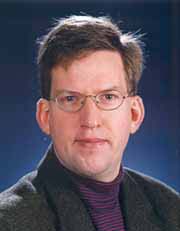This topic covers issues related to energy generation, conversion, transportation and consumption and how the industry is addressing the challenge of energy efficiency in general.
innovations-report provides in-depth and informative reports and articles on subjects ranging from wind energy, fuel cell technology, solar energy, geothermal energy, petroleum, gas, nuclear engineering, alternative energy and energy efficiency to fusion, hydrogen and superconductor technologies.

An invention being developed jointly by the Low Temperature Engineering Group at the University of Southampton and BOC Edwards could help turn the dream of hydrogen technology into reality. In future, electricity, and in some applications useful heat, could be generated in a fuel cell through the combination of hydrogen and oxygen, with water being produced at the end of the process.
Howard Stone, an Engineering Doctorate student, and his supervisor Dr Neil Richardson of the School of Engine

The new TWT-1650 wind-powered generator presented in Pamplona has 36-metre vanes which, in a circular movement, sweep an area greater than that of a football pitch and which can withstand extremes of weather, including winds of up to 110 kilometres an hour.
This device, made by Grupo Mtorres in collaboration with the Institute for the Diversification and Saving of Energy (IDAE), is beginning its commercial life, after three years of tests.
The new model, with a power of 1,650 kilow

Increased use of renewable sources is central to the European Commission’s energy policy. The EU has set itself the goal of doubling renewable sources’ share of overall energy production to 12% by 2010. It was a step in the right direction when the International Electrotechnical Commission (IEC) voted to adopt procedures proposed by the European Commission’s Joint Research Centre (JRC). These actions would establish the traceability of photovoltaic (PV) solar cell references to SI standards. Thi

Engineers have designed a new diode that transmits more electricity than any other device of its kind, and the inspiration for it came from technology that is 40 years old.
Unlike other diodes in its class, called tunnel diodes, the new diode is compatible with silicon, so manufacturers could easily build it into mainstream electronic devices such as cell phones and computers.
Industry has long sought to marry tunnel diodes with conventional electronics as a means to simplify incre

Residential fuel cells sound almost too good to be true. Take a hydrocarbon fuel such as natural gas, use a catalyst to extract hydrogen from it, react the hydrogen with air and, presto, you have a home power plant!
As the hydrogen and the oxygen in the air combine, they produce electricity. The primary “waste products” of the whole process are water and heat. But that’s not all! The “waste” heat can be captured to provide space or water heating for the home.
Residential fuel

Plans are underway to test new system
The nations current electric grid system will not work in the future with solar and wind farms providing substantial but intermittent power over long distances.
By 2050, it will take between 15 and 20 Terawatts (TW) of electric power to supply the North American economy. A little under 7 TW is currently used, with most of that consumed in the United States. The “Smart Electric Grid of the Future” must be able to efficiently and securely